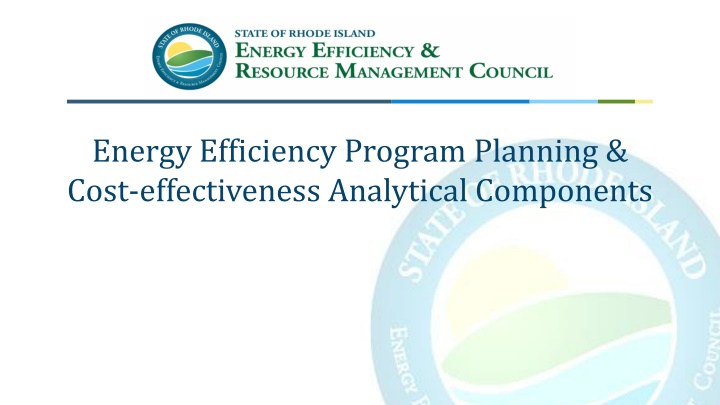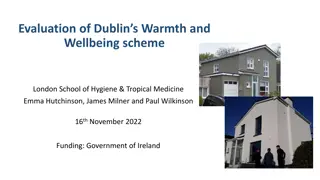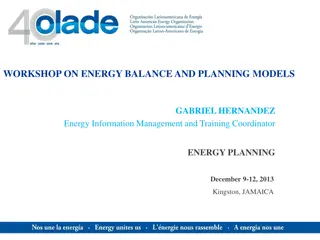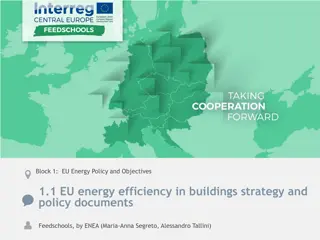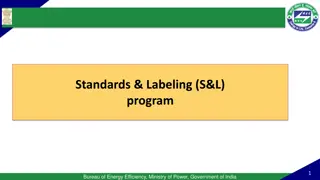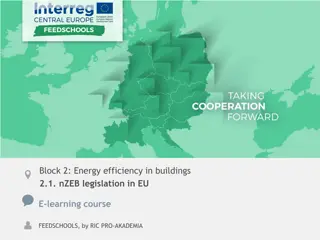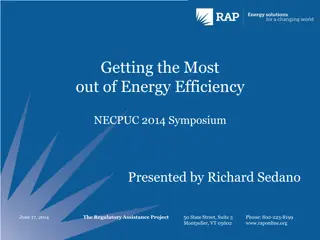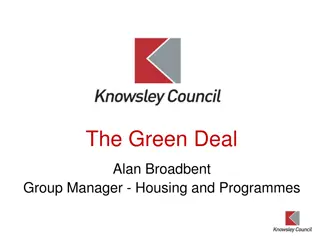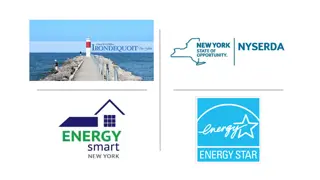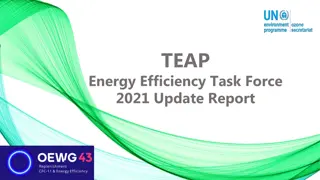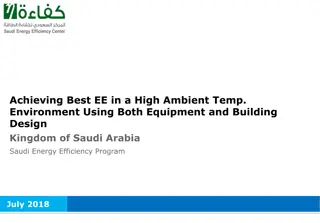Energy Efficiency Program Planning & Cost-effectiveness
This article discusses the analytical components and key milestones related to energy efficiency program planning and cost-effectiveness in Rhode Island. It covers topics such as least-cost procurement, standards, three-year planning process, setting energy savings targets, and the role of the EERMC in planning processes.
Download Presentation

Please find below an Image/Link to download the presentation.
The content on the website is provided AS IS for your information and personal use only. It may not be sold, licensed, or shared on other websites without obtaining consent from the author.If you encounter any issues during the download, it is possible that the publisher has removed the file from their server.
You are allowed to download the files provided on this website for personal or commercial use, subject to the condition that they are used lawfully. All files are the property of their respective owners.
The content on the website is provided AS IS for your information and personal use only. It may not be sold, licensed, or shared on other websites without obtaining consent from the author.
E N D
Presentation Transcript
Energy Efficiency Program Planning & Cost-effectiveness Analytical Components
Least-Cost Procurement: Timeline & Key Milestones 1996 RI enacted electric restructuring legislation AKA: Rhode island s Public Utilities Restructuring Act of 1996. Created the nation s first public benefit fund Funded through the SBC Flat Fee set between 1996 and 2006 Only electric programs 2002: separated DSM (90%) and Renewable (10%) charges 2006: Rhode Island Comprehensive Energy Conservation, Efficiency, & Affordability Act (i.e. Least-cost Procurement) Startup phase: 2006-2008 2008, Programs started 2010: Revenue Decoupling 2006: RI Comprehensive Energy Conservation, Efficiency and Affordability Act (i.e. Least Cost Procurement) 2012: First Triennial Plan Filed 1996 RI Public Utilities Restructuring Act 2010: Revenue Decoupling and LCP extended to gas 2006: Creation of first Natural Gas legislation 1996 2006 Flat fee set for electric programs only 2011: Targets set for 2012- 2014 Triennial Plan
Least Cost Procurement Standards About: The Standards are guidelines for least cost energy efficiency plans. Last updated: June, 2017 Prescribed guidelines for: Three-Year Plans Annual Plans System Reliability Plans
The Three-Year Planning Process At a Glance 18 19 20 17 Targets Three-Year Plan EM&V Plan Plan 2020 2018 2019 Plan Drafts Plan Drafts Implement Implement Plan Plan Drafts Implement EM&V EM&V EM&V Annual Plans
Setting Energy Savings Targets Targets Three-Year Plan EM&V
Setting Energy Savings Targets First step of the 3-year planning process. EERMC responsible for drafting and filing with the PUC Works closely with N-Grid, OER, and Collaborative. Targets are set on a triennial basis and are completed a year in advance of a completed 3-year plan. Targets cost-effective potential and proposes energy savings targets for PUC consideration. Targets are developed to serve as guideposts as the utility develops its 3-Year Plan and more detailed Annual Plans.
The Three-Year Plan Three-Year Plans Annual Plans Targets Three-Year Plan System Reliability Plans
The Role of the EERMC The Role of the EERMC for the three year and annual planning process: Set Targets Review/ provide Input on Plan drafts Work with C-team to understand key topics/ issues Develop and submit cost-effectiveness memo to the PUC Sign on to the Settlement of the Parties (i.e. The Plan)
